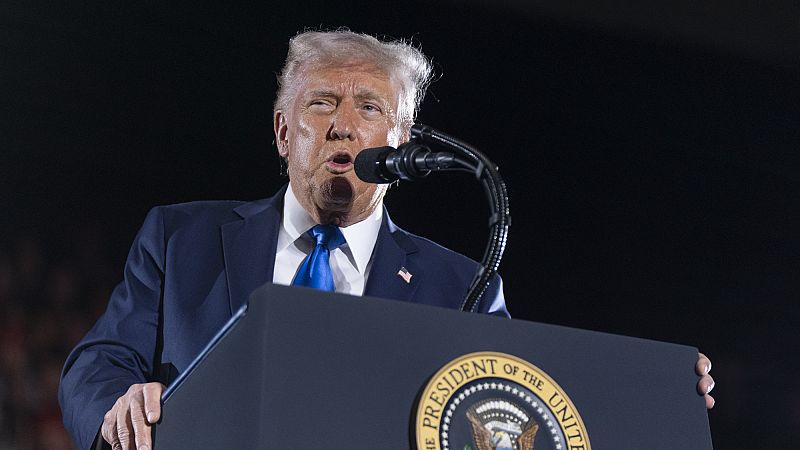
The US greenback — and its relationship with bond yields — has recently given economists much to chew over. The US dollar index, which measures the value of the greenback against six foreign currencies, has dropped more than 8% since January. Last month, it hit its lowest level in three years.
At the same time, US bond yields have been rising, defying a standard economic pattern. In times of uncertainty, investors typically flock to US Treasuries, viewing bonds as a safe place to park their money. As a result, you’ll usually see bond yields fall when stock markets slump, and the dollar typically rises. During the crises of 2008 and 2020, for instance, the value of the greenback increased.
Against a backdrop of unconventional economic policies from US President Donald Trump, markets are now behaving more erratically. A recent rise in bond yields, accompanied by a drop in the dollar, suggests that investors are flying from US assets, losing faith in Treasuries. For those familiar with the UK, the past month carries traces of the bond crisis induced by former Prime Minister Liz Truss in 2022. A spike in gilt yields on the back of a controversial economic package, combined with a plummet in the pound’s value, forced the government into retreat.
High bond yields mean the US government must pay more interest on the debt it is borrowing, constraining spending. Higher debt-servicing costs are particularly unwelcome as the US is already running a heavy budget deficit. This figure grew to around $1.8 trillion for the fiscal year 2024, the third-largest federal deficit in US history, equal to 6.4% of GDP. It’s possible that a spike in bond prices contributed to Trump’s decision to pause so-called “reciprocal” tariffs for 90 days at the start of April.
The dollar’s fall comes after the currency rose around last year’s presidential election. Growth in the US was robust, and when Trump won the election, many hoped that he would continue to boost economic expansion. On the other hand, predictions of an inflationary spike — fuelled by Trump’s promise to impose tariffs — also drove up the dollar. The prospect of higher interest rates and increased returns boosted foreign investor demand for the currency.
Warning signs for investors
“Markets are increasingly nervous about US policy credibility, as seen in a rise in the term premium demanded by investors to own US Treasuries, as well as the downward pressure on the US dollar,” Ranjiv Mann, senior portfolio manager at AllianzGI, told Euronews.
In particular, Mann identified Trump’s pressure on Federal Reserve Chair Jerome Powell as a cause for concern.
“Even though Powell’s term does not end until May 2026 and Trump does not have the constitutional authority to remove Powell before the end of his term, the risk is that the Fed will become more politicised in the coming years, eroding monetary policy credibility and confidence in US assets,” Mann explained.
Trump has recently renewed his criticism of Powell, commenting at a recent rally: "I know much more than he does about interest rates, believe me."
Aside from threats to the Fed, there are other indicators worrying investors — indicative of the breakdown of financial and political order in the US. The cost-slashing bureau DOGE, sudden cuts to foreign aid, withdrawals from international treaties, the prospect of financial deregulation, and Trump’s disregard for Congressional approval are just a few signals shaking market confidence, along with the prospect of an imminent recession. In early April, Congress also approved a budget resolution to slash taxes, set to massively widen the US’ deficit over the next decade.
While demand for US stocks and bonds has fallen, experts say it’s still unlikely that the US will default on its debt obligations.
Dollar supremacy
The dollar cemented its status as the world’s reserve currency in 1944 at the Bretton Woods conference, an event which also brought about the creation of the IMF and the World Bank. Rather than linking world currencies to gold, delegates decided to peg them against the dollar. This means the greenback is now the dominant currency for international transactions and is held in large quantities by central banks around the world. As the dollar’s reserve status bolsters demand, this set-up benefits the US as it lowers its borrowing costs and inflates USD-denominated asset prices.
“It enables the US to run persistent trade and fiscal deficits without immediate pressure, and insulates its economy from the usual constraints of rising leverage,” Vasso Ioannidou, professor of finance at Bayes Business School in London, told Euronews. The supremacy of the dollar also means that US sanctions against foreign nations can be particularly influential.
According to Bernd Kempa, economics professor at the University of Münster, the greenback’s reserve status is “also beneficial to US producers”.
“Capital imports keep US interest rates low and generate additional investments which in turn spur the long-run growth prospects of the US economy. Moreover, the pricing of many internationally traded goods in US dollars saves on hedging and currency conversion costs for US firms.”
Even so, there are some who believe the strength of the dollar is hollowing out US manufacturing — a view expressed by President Trump and Vice President JD Vance. When the greenback is strong, it means that US products become relatively more expensive for foreign customers and overseas products become relatively cheaper for buyers in the US. This is one reason for the US’ large trade deficit with other nations.
A new era?
While Trump is undermining the dollar, it’s difficult to see a contender that could take the greenback’s place as the world’s reserve currency. The Swiss franc, the Chinese yuan or the Japanese yen all have their attractive qualities, although they lack the deep capital markets and stability enjoyed by the dollar.
“We already have stronger investor interest in euro-denominated assets,” Valdis Dombrovskis, the commissioner in charge of the EU’s economy, said at a recent IMF meeting — cited by the New York Times. “We see that our stability, predictability and respect for the rule of law is already proving a strength.”
Since the debt crisis of 2009, the euro has earned back investor confidence. The ECB now takes a more active role in supporting economies through bond-buying programmes, and the EU has shown its willingness to prop up flailing member states. A recent development cheering investors is Germany’s promise to issue around 1 trillion euros in additional government debt. The stimulus is set to boost the eurozone economy while demand for bunds — considered a safe haven asset — has spiked. Despite this, the euro still has a long way to go. A single capital market that allows money to easily cross European borders is not yet a reality, and it will require regulatory harmonisation. Certain debt-laden member states are also continuing to hamper the fiscal attractiveness of the bloc as a whole.
“A shift away from the dollar is theoretically possible but highly unlikely in the near term,” Vasso Ioannidou explained. “That said, recent policy shifts and the US’s retreat from global leadership are prompting other countries to re-evaluate their exposure. Many are already diversifying to reduce risk. If sustained, this trend could gradually erode the dollar’s dominance.”
It doesn’t look like the dollar’s reign will be over soon, although an investor retreat is already in play. The imminent fate of the greenback will heavily depend on choices taken in coming months by President Trump, and whether he walks back some of his more destabilising policies.







